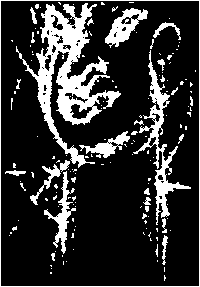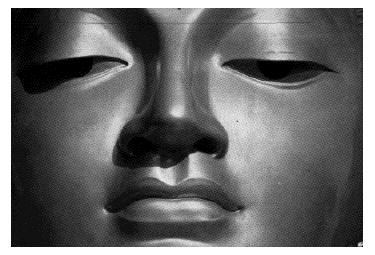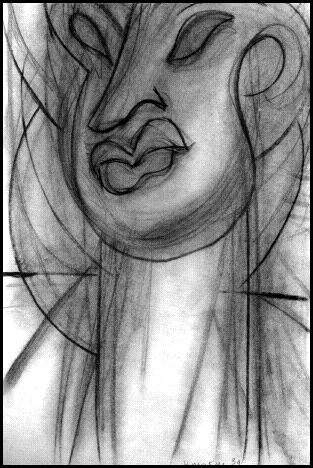Karen Armstrong
(Penguin/Viking)

The old style religions of the priestly class --- not unlike our fundamentalist religions --- also began to give way to religions and philosophies that depended on the personal instincts of the individual. It was the time of Confucius and Lao Tzu, Zoroaster, Socrates, and Plato. "The Axial Age marks the beginning of humanity as we know it," she writes. "During this period, men and women became conscious of their existence, their own nature and their limitations in an unprecedented way."
Ms. Armstrong does an interesting job with a complicated subject. She is able to pull together all the various traditions that formed the Buddha --- to the point that she claims some of his most important formulations are "nothing strikingly original." Take the Four Noble Truths. "Most of the monks and ascetics of North India," she reports,
would have agreed with the first three, and Gotama himself had been convinced of them since the very beginning of his quest. If there was anything novel, it was the fourth truth, in which Gotama proclaimed that he had found a way to enlightenment, a method which he call the Noble Eightfold Path.
What are the Noble Truths?
- All of life is a pain-in-the-ass;
- There is a reason why it is such a pain-in-the-ass: 'cause we're always wanting stuff we can't have --- or, aren't supposed to have;
- However, there is something called Nirvana, and it's the way out of this mess;
- The WayOut (as Winnie-
the- Pooh would have it) is in the Noble Eightfold Path.
The Eightfold Path?
- Talk nice.
- Be nice.
- Work nice.
- Don't just sit there: work at it.
- Keep your mind from wandering all over the place.
- Concentrate as if your life depends on it.
Finally, the last of the Eight: You need to get something called "right understanding," and, as well, "right resolve." Which means?
Live the holy life. Don't be beating on people (or dogs or cats or horses, for that matter). Because it's all tied together. When they make you come back again, as yet another people --- all this crap is going to come floating back with you, like when the toilet overflows, as "a new birth and further sorrow, sickness, grief, and death."
How many times do you want to go through this crap, anyway? If you're on your deathbed thinking about the last big screw, or wanting to make just another $50,000 on the stock market, or still wanting to get back at you brother who stuck it to you sixty years ago --- these will pop up in your new life, "a flame," as Buddha said, "that leaps from one wick to another."
The main problem, the one that always-
Are
Always
Becoming

It's all to easy to imagine God to be a being like ourselves writ large, with likes and dislikes similar to our own, it is all too easy to make "him" endorse some of our most uncharitable, selfish and even lethal homes, fears, and prejudices. This limited God has thus contributed to some of the worst religious atrocities in history.
Any doubts of this, just remember that during the most bloody wars in history, the U. S. Civil War, WWI, WWII --- soldiers on both sides were calling on the Christian God to help their righteous cause.
Much of what we do --- without the deep insight and understanding that Buddhism requires --- is harmful to others. Much of what we even think can hurt others. Our volition, bodies, feelings, perceptions, and needs will always be fuddling us up, beating us down. And this "me" will never be satisfied. Why? Get this: there is no "me."
We think we are this person in this time in this body living this stuff that we call "life." T'aint so. We are a conglomerate --- worse than Philip Morris or Warner/Yahoo --- a bagful of thoughts and desires and feelings and hates and fears that are constantly running through our brains, turning it (and us) into a babbling maelstrom, a mass of hankerings and needs and fears. Thus, there is no "self" that has to be, as Armstrong relates it, "defended, inflated, flattered, cajoled and enhanced at the expense of others."
Once we learn this hardest of the Truths, the self begins to fade away, the cravings go, there is a "release of the heart."
In the process, it is essential, to not only live a "selfless life," but get rid of the gods, for god's sakes. Because this personalization of a divine being is just another fetter, keeping us from being free. It's enough to remind us of that old drinking song,
I don't care if it rains or freezes
As long as I got my plastic Jesus
On the dashboard,
There in front of me.
Over the years, I've read, perhaps, a couple of hundred books on Buddhism. This one has it all. It's written in plain English. It brings together the traditions that formed Buddha. It tells his story (or at least as much as can be known). But what it does best is to take all those rather complicated pieces of history and theory that have evolved over the last 2500 years, and pull the skein tight --- make it possible for us to understand, in the most concise way possible, what Buddhism is all about.
It's 187 pages long, and every page is packed with simple, good, reasonable and --- dare I say it? --- inspiring documentation on one of the most fascinating religions of the world, one of that says:
--- You can stop looking for the divine right now, dummie;
--- The godhead is already there, inside of you (it's been there all along);
--- You can call it up, whenever you are ready;
--- You are it.

at Tokyo
The Japanese
War Crimes Trials
Tim Maga
(University Press of Kentucky)
It was a strange task that the American government set for itself. As at Nuremberg, partial attempts were made to use American criminal trial procedures, but one of the points that Maga makes is that theory of precedence, treatment of hearsay evidence, presumed innocence, and even problems in translation meant that there was far different jurisprudence in the Tokyo trials than on the mainland.
Some of the stories that appear in Judgment at Tokyo are gripping and hideous. The "hell ships" in which 3,000 captured American soldiers were shipped back to Japan are described graphically (and they sound not unlike slave ships from the previous century). On one, the Oryoko Maru, more than half of the POWs died of disease and starvation. Before the ship reached Japan, it was torpedoed by an American submarine; the men in the holds were trapped without ladders as it began to sink. Calvin Graef, one of the prisoners, and "the healthiest of his fellow POWs,"
made a human pyramid of the dead, roughly thirty feet high, to climb to the top of the hold. They broke through the two hatches that separated them from the main deck. The few remaining Japanese seamen were attacked and beaten to death while the ship sank. Several Americans went down with Oroko Maru still pummeling their former captors.
Judgment at Tokyo is less concerned with extreme descriptions of the treatment of prisoners and civilians during the war than with questions of legal techniques, the political nature of the trials, the question of whether Japan and its culture were on trial, and the overriding question of what is criminal in times of war. In fact, the work tends to be so focussed on these legalities --- often presented in a rather befuddled fashion --- that some readers not trained in law nor ethics might lose interest.
Furthermore, the legacy of the trials, especially in regards to other atrocities in other locales ("ethnic cleansing," Viet-Nam, Pol Pot) is less riveting than, for example, sensational descriptions of cannibalism on the island of Chichi Jima, where one Col. Kikuji Ito had "cannibal feasts...with a special taste for enemy flesh."
And the deeper moral question of what is or is not atrocity in times of war is brought up, but in such a helter-skelter fashion that the import of it is lost. "Atomic atrocities" are mentioned twice, glancingly, but it is not until we reach mid-way, with the trail of Admiral Shigematsu Sakaibara, that the issue is dealt with squarely. The admiral had ninety-seven Americans executed on Wake Island immediately before the invasion of the U. S. Marines:
Sakaibara, albeit with carefully picked words, admitted he was guilty of rash and unfortunate actions. He appeared especially convincing when he noted that he wished he had never heard of Wake Island. But his most memorable comments involved his own view of morality in war. A nation that drops atom bombs on major cities, the rear admiral explained, did not have the moral authority to try to many of his countrymen. With Hiroshima and Nagasaki in mind, Sakaibara claimed there was little difference between himself and the victors over Japan.
"With that statement," concludes the author, "a legend grew, particularly in his home town, of Sakaibara, the victim of American revenge."
The Boats
New and
Selected Poems
1988 - 2000
Lucille Clifton
(BOA)
She's famous: she was Poet Laureate of the State of Maryland, a finalist in the Pulitzer Prizes and the National Book Award, with citations from Charity Randall, the Shelley Memorial, and the Lannan Literary Award.
So everything's is place --- right? She's a poet.
Well. What can we say, without it sounding like we are antagonistic to someone who makes slavery, lynchings, cancer, etc. vital and alive and scary. Still --- dare we say it: that we don't think she is a poet?
She does end-stopped lines. She has occasional interesting images:
Her hair
is white with wonderful
she is
round with the moon
Too, her song of black alienation rings true, has forceful touch of irony, as she writes about, for example, Superman:
I understand the cape
the leggings, the whole
ball of wax.
you can trust me,
there is no planet stranger
than the one i'm from.
And the bitterness can touch one, such as "Wishes for Sons,"
i wish them cramps.
I wish them a strange town
and the last tampon.
I wish them no 7-11...
later i wish them hot flashes
and clots like you
wouldn't believe. let the
flashes come when they
meet someone special.
let the clots come
when they want to.
But those of us who are professional poetasters want a bit more. We would like images to not only stun us, but to be poetically right. We want the rhythm, too, to be just right --- and in no way slapdash.
We want mystery, we want surprise, a feeling of wow! And I'm afraid that we won't get it from Ms. Clifton.
She's artfully artful. She is addressing all the right things for those of us in the liberal/guilty American world. She makes us feel bad for the wrongs of the history, and bad people everywhere.
But when she writes,
who did i fail, who
did i cease to protect
that i should wake each morning
facing the cold north?
perhaps there is a cart
somewhere in history
of children crying "sister
save us" as she walks away.
we have to apply the ultimate poetry test --- the one that we give to all who claim to be Poet. What we do is to put it in prose, add the appropriate capitals, and see how it changes:
Who did I fail, who did I cease to protect that I should wake each morning facing the cold north? Perhaps there is a cart somewhere in history of children crying "sister save us" as she walks away.
She's a good and moving writer. But, alas, she's no poet.
Joan Drummond Miller
Carolyn Livingston
Julie Houy
(Creative Arts Book Company)
Beyond Bingo is a small, witty novel about death, dying and medical marijuana --- but mostly it is about friendship. Set in Pacific Grove, CA, "The Butterfly Capital of the World," it resembles a genteel and literate English country mystery where character and setting are paramount.
The story concerns the trio's attempts to help a dying friend, but each woman has problems of her own, and it is their resolution, as much as the plot, that carries us. Small, energetic, wannabe wacky Vi is constrained by her daughter, a "grim, tofu-eating fanatic," who longs to place her erratic mother in a safe rest home. Newly married Sophie, an old maid all her life, fears losing her husband, and Katherine, having lived by the rules, faces old age with an alienated family and an increasing awareness of her wasted life.
Katherine's old friend Rita is dying of cancer. She wants marijuana to relieve her pain and her nausea. She can't get it from her doctor, so she turns to her friend. A dying wish carries our culture's heaviest obligations. Vi, Sophie and Katherine, of an age when lives seem set in concrete are asked to break the law and expose themselves to danger.
They are middle-class matrons, not old hippies, and their decision to risk it is not easy. When they find themselves supplying the entire cancer community, buying pounds instead of ounces, their problems (and the plot's problems) begin. A confusing encounter with the local Mafia gives the old girls a chance to show their stuff, but never mind, the book isn't about plot so much as dialogue, or mystery so much as personal growth. Their escapes from thugs and the law aren't as interesting as their escapes from their stereotyped lives, and this keeps the reader reading while the rationalist might be saying, "Oh really!"
Beyond Bingo is worthwhile for showing a different paradigm for ageing. More than a caper novel, it shows the landscape of age as a place with new boundaries and challenges, but new freedoms, too. Wide rather than deep, it can be compared, in some ways, to Muriel Sparks' Memento Mori. Beyond Bingo, light as a quart of Pacific Grove's signature butterflies, thinks about old age with the same wit and respect.